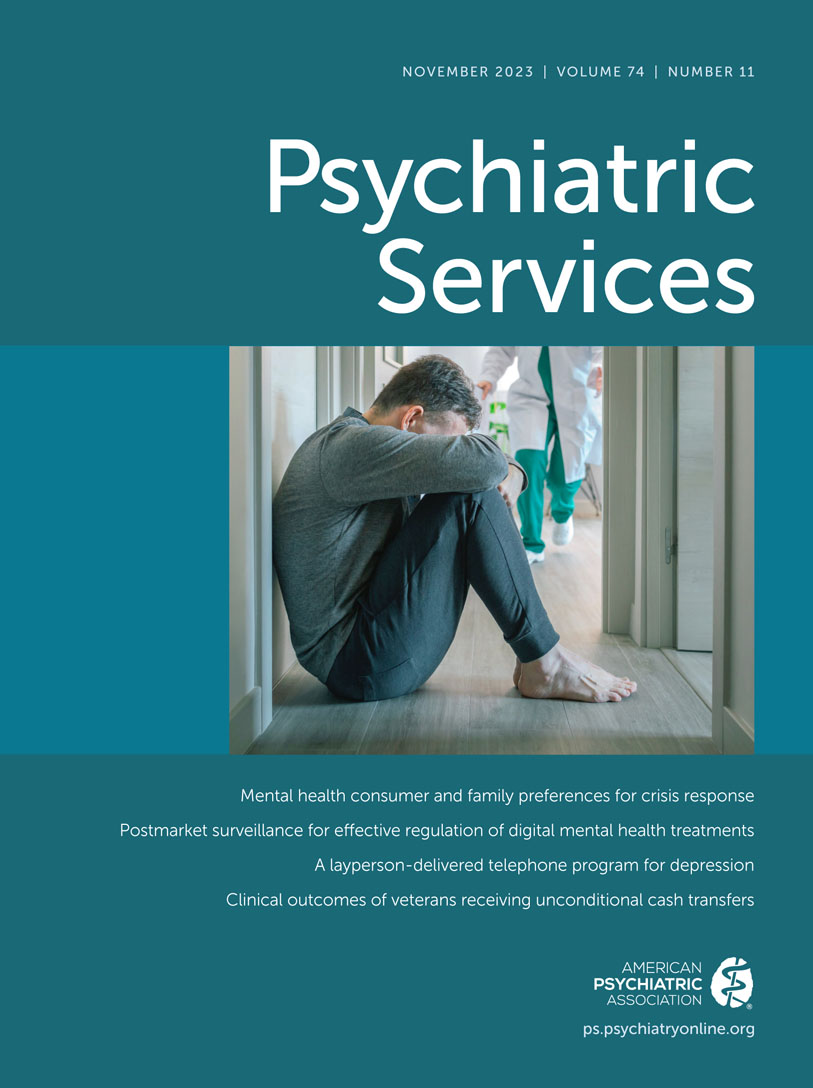Prescription of Long-Acting Injectable Antipsychotic Medications Among Outpatient Mental Health Care Service Providers
Abstract
Objective:
Long-acting injectable antipsychotic medications (LAIAPs) are a valuable and underused treatment for patients with chronic mental illnesses such as schizophrenia and bipolar disorder. This study aimed to examine prescription patterns of LAIAPs among outpatient mental health care service providers in the United States.
Methods:
The authors conducted a secondary analysis of the 2020–2021 National Mental Health Services Survey to assess the percentage of outpatient mental health care service providers (N=9,433) that prescribed LAIAPs to patients. Descriptive statistics were calculated to describe the overall frequency of outpatient facilities prescribing LAIAPs and differences in the specific LAIAPs prescribed. The authors also conducted multivariable analyses to identify facility characteristics associated with likelihood of LAIAP prescribing.
Results:
Across all outpatient mental health care service providers, 30.6% prescribed LAIAPs. Community mental health centers were most likely to prescribe LAIAPs (62.6%), whereas partial hospitalization and day programs were least likely (32.1%). The most used LAIAP was paliperidone palmitate (77.7%), and the least used was olanzapine pamoate (29.6%). Providers with programs specifically for patients with serious mental illness (59.5%) and providers with a dedicated first-episode psychosis program (58.2%) were more likely to prescribe LAIAPs than were providers without such programming.
Conclusions:
Prescription of LAIAPs is limited at outpatient mental health care service providers in the United States. Expansion of these services and diversification of delivery models are needed to improve LAIAP prescriptions, which are associated with improved patient outcomes across a broad range of measures.
Access content
To read the fulltext, please use one of the options below to sign in or purchase access.- Personal login
- Institutional Login
- Sign in via OpenAthens
- Register for access
-
Please login/register if you wish to pair your device and check access availability.
Not a subscriber?
PsychiatryOnline subscription options offer access to the DSM-5 library, books, journals, CME, and patient resources. This all-in-one virtual library provides psychiatrists and mental health professionals with key resources for diagnosis, treatment, research, and professional development.
Need more help? PsychiatryOnline Customer Service may be reached by emailing [email protected] or by calling 800-368-5777 (in the U.S.) or 703-907-7322 (outside the U.S.).



